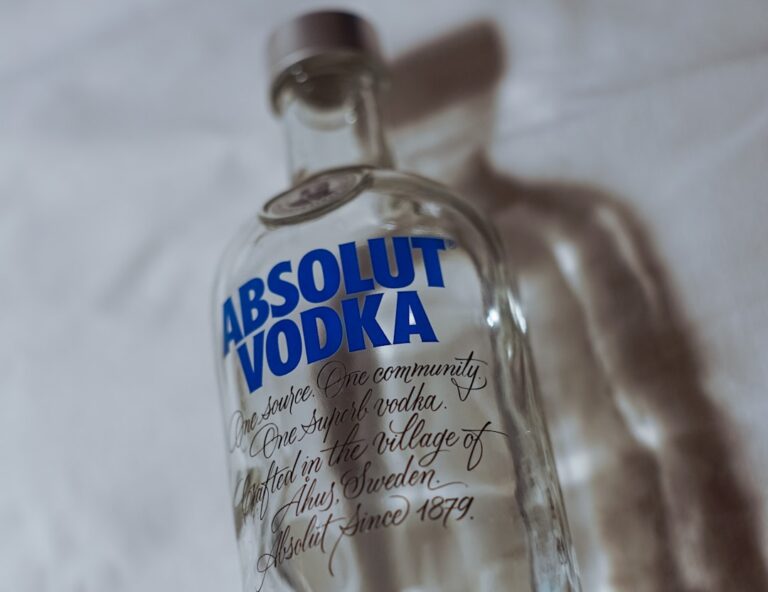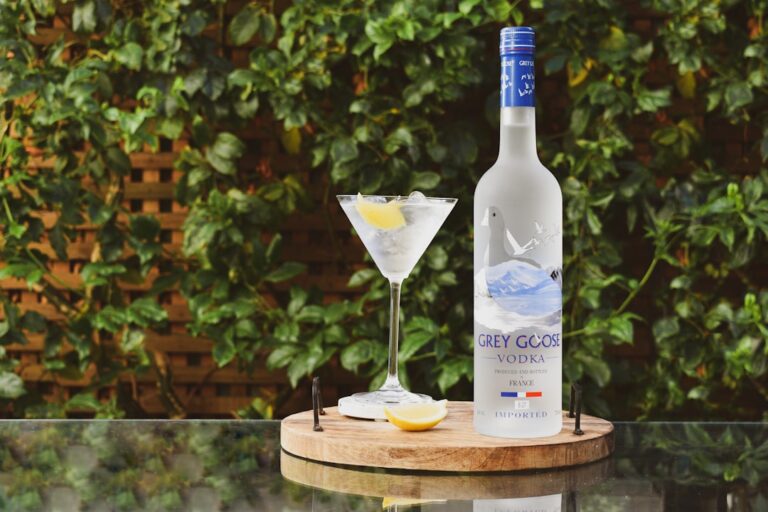Mixology, the art and science of crafting cocktails, has a rich and fascinating history that dates back centuries. The term “mixology” itself is a relatively modern one, coined in the 19th century to describe the art of mixing drinks. However, the practice of mixing and creating alcoholic beverages has been around for much longer.
The history of mixology can be traced back to ancient civilizations such as the Greeks and Romans, who were known for mixing wine with various herbs and spices to create flavorful concoctions. As trade routes expanded and new ingredients became available, mixology evolved, with different cultures adding their own unique twists to the craft.
During the Prohibition era in the United States, mixology took on a new significance as bartenders and bootleggers worked to create palatable drinks using low-quality, often dangerous, alcohol. This period gave rise to the speakeasy culture and the creation of classic cocktails that are still enjoyed today. In recent years, mixology has experienced a resurgence, with a focus on fresh, high-quality ingredients and innovative techniques. Today, mixologists continue to push the boundaries of cocktail creation, drawing inspiration from the past while embracing modern trends and flavors.
Key Takeaways
- Mixology has a rich history dating back to ancient civilizations and has evolved over time to become a respected craft.
- Using high-quality ingredients is crucial in mixology as it directly impacts the taste and overall experience of a cocktail.
- Understanding flavor profiles is essential for creating well-balanced and delicious cocktails.
- Balancing sweet and sour elements is an art that can elevate a cocktail and make it more enjoyable.
- Presentation plays a significant role in the overall experience of a cocktail, as it can enhance the visual appeal and anticipation of the drink.
- Experimenting with Tito’s Vodka opens up a world of possibilities for creating unique and flavorful cocktails.
- Tito’s offers a variety of perfect cocktail recipes that showcase the versatility and quality of their vodka.
The Importance of Quality Ingredients
One of the key elements of successful mixology is the use of high-quality ingredients. Whether it’s fresh fruits and herbs, top-shelf spirits, or artisanal bitters, the quality of the ingredients used in a cocktail can make or break the final product.
Fresh ingredients not only contribute to the flavor and aroma of a cocktail but also add visual appeal. When using fresh fruits and herbs, mixologists can create vibrant, colorful drinks that are as visually appealing as they are delicious. Additionally, high-quality spirits can elevate a cocktail, providing depth and complexity that lower-quality options simply cannot match.
In recent years, there has been a growing emphasis on using locally sourced and sustainable ingredients in mixology. This trend not only supports local farmers and producers but also allows mixologists to create unique, regionally inspired cocktails that showcase the flavors of their surroundings. By prioritizing quality ingredients, mixologists can create cocktails that are not only delicious but also ethical and environmentally conscious.
Understanding Flavor Profiles
A fundamental aspect of mixology is understanding flavor profiles and how different ingredients interact with one another. A well-crafted cocktail should have a balanced combination of sweet, sour, bitter, and savory flavors that complement each other and create a harmonious drinking experience.
When creating a cocktail, mixologists must consider the flavor profiles of each ingredient and how they will work together in the final product. For example, citrus fruits like lemon and lime provide a bright, acidic element that can balance out the sweetness of a cocktail, while bitters add depth and complexity. By understanding how different flavors interact, mixologists can create cocktails that are well-rounded and satisfying.
In addition to considering individual flavors, mixologists must also think about how the overall flavor profile of a cocktail will evolve as it is consumed. A well-crafted cocktail should have layers of flavor that unfold as the drink is enjoyed, keeping the palate engaged and intrigued from the first sip to the last.
The Art of Balancing Sweet and Sour
| Recipe | Ingredients | Instructions |
|---|---|---|
| Sweet and Sour Chicken | Chicken, bell peppers, pineapple, onion, sweet and sour sauce | 1. Cut chicken into cubes. 2. Stir-fry chicken until cooked. 3. Add bell peppers, pineapple, and onion. 4. Pour sweet and sour sauce. 5. Cook until vegetables are tender. |
| Sweet and Sour Sauce | Ketchup, vinegar, sugar, soy sauce, cornstarch, water | 1. Mix ketchup, vinegar, sugar, and soy sauce in a saucepan. 2. Dissolve cornstarch in water. 3. Add cornstarch mixture to the saucepan. 4. Cook until thickened. |
One of the key skills in mixology is mastering the art of balancing sweet and sour flavors in a cocktail. Achieving the perfect balance between these two elements is essential for creating a drink that is both refreshing and satisfying.
Sweetness in a cocktail can come from a variety of sources, including simple syrup, fruit juices, liqueurs, or even naturally sweet spirits like rum or bourbon. On the other hand, sourness is often provided by citrus juices such as lemon or lime. Finding the right ratio of sweet to sour is crucial for creating a well-balanced cocktail that is neither cloyingly sweet nor overly tart.
In addition to sweet and sour elements, mixologists may also incorporate bitter or savory flavors to add complexity to a cocktail. Bitters, for example, can help to balance out sweetness and add depth to a drink. By carefully considering the interplay of these different flavors, mixologists can create cocktails that are nuanced and satisfying.
The Role of Presentation
In mixology, presentation is just as important as flavor. A well-presented cocktail not only looks appealing but also enhances the overall drinking experience for the consumer.
The glassware used to serve a cocktail can have a significant impact on its presentation. Different types of glassware can be used to showcase different types of cocktails, from tall Collins glasses for refreshing highballs to elegant coupes for classic martinis. Additionally, garnishes such as citrus twists, fresh herbs, or edible flowers can add visual interest and aromatic complexity to a cocktail.
Beyond glassware and garnishes, attention to detail in the preparation and serving of a cocktail is also crucial for presentation. From perfectly clear ice cubes to precise pouring techniques, every aspect of crafting and serving a cocktail contributes to its overall presentation.
Experimenting with Tito’s Vodka

Tito’s Handmade Vodka is an excellent spirit for mixologists to experiment with due to its smooth and clean flavor profile. Made from 100% corn and distilled six times, Tito’s Vodka has a subtle sweetness and a smooth finish that makes it versatile for use in a wide range of cocktails.
When experimenting with Tito’s Vodka, mixologists can explore a variety of flavor combinations to create unique and innovative cocktails. Whether it’s infusing the vodka with fresh fruits and herbs or pairing it with complementary liqueurs and mixers, Tito’s Vodka provides a solid foundation for creativity in mixology.
In addition to its flavor profile, Tito’s Vodka is also known for its commitment to quality and craftsmanship. As an American-made vodka that is gluten-free and distilled in small batches, Tito’s Vodka embodies the values of authenticity and attention to detail that are central to the art of mixology.
The Perfect Tito’s Cocktail Recipes
1. Tito’s Lemon Basil Martini
– 2 oz Tito’s Handmade Vodka
– 1 oz fresh lemon juice
– 1/2 oz simple syrup
– 3-4 fresh basil leaves
– Lemon twist for garnish
In a shaker, muddle the basil leaves with the simple syrup. Add Tito’s Handmade Vodka and fresh lemon juice to the shaker with ice. Shake well and strain into a chilled coupe glass. Garnish with a lemon twist.
2. Tito’s Cucumber Mint Cooler
– 2 oz Tito’s Handmade Vodka
– 1/2 oz fresh lime juice
– 1/2 oz simple syrup
– 3-4 slices of cucumber
– 4-5 fresh mint leaves
– Club soda
In a shaker, muddle the cucumber slices and mint leaves with the simple syrup. Add Tito’s Handmade Vodka and fresh lime juice to the shaker with ice. Shake well and strain into a highball glass filled with ice. Top with club soda and garnish with a cucumber slice and mint sprig.
3. Tito’s Spicy Grapefruit Margarita
– 2 oz Tito’s Handmade Vodka
– 1 oz fresh grapefruit juice
– 1/2 oz fresh lime juice
– 1/2 oz agave nectar
– 2-3 slices of jalapeño
– Salt for rimming
Rim a rocks glass with salt. In a shaker, muddle the jalapeño slices with agave nectar. Add Tito’s Handmade Vodka, fresh grapefruit juice, and fresh lime juice to the shaker with ice. Shake well and strain into the prepared rocks glass filled with ice. Garnish with a slice of grapefruit and a jalapeño slice.
In conclusion, mixology is an art form that combines history, craftsmanship, and creativity to produce delicious and visually stunning cocktails. By understanding the history of mixology, prioritizing quality ingredients, mastering flavor profiles, balancing sweet and sour elements, paying attention to presentation, experimenting with spirits like Tito’s Vodka, and crafting perfect cocktail recipes, mixologists can elevate their craft and provide memorable drinking experiences for their patrons.
Check out this fascinating article on the history and production of Tito’s Handmade Vodka at AreYouFabulous.com. Learn about the meticulous process behind creating this renowned spirit and gain a deeper appreciation for its quality and craftsmanship. Whether you’re a vodka enthusiast or simply curious about the world of spirits, this article is sure to provide valuable insights into the world of Tito’s Handmade Vodka.
FAQs
What is the handle of Tito’s?
The handle of Tito’s refers to a 1.75-liter bottle of Tito’s Handmade Vodka, a popular brand of vodka produced in Texas.
How much does a handle of Tito’s cost?
The cost of a handle of Tito’s can vary depending on the location and retailer, but it typically ranges from $30 to $40.
How many servings are in a handle of Tito’s?
A handle of Tito’s contains approximately 39 servings, with each serving being 1.5 ounces.
What is the alcohol content of Tito’s Handmade Vodka?
Tito’s Handmade Vodka has an alcohol by volume (ABV) of 40%, making it 80 proof.
Can I purchase a handle of Tito’s online?
In some regions, it is possible to purchase a handle of Tito’s online through licensed retailers and delivery services. However, the availability of online purchasing may vary depending on local laws and regulations.













+ There are no comments
Add yours